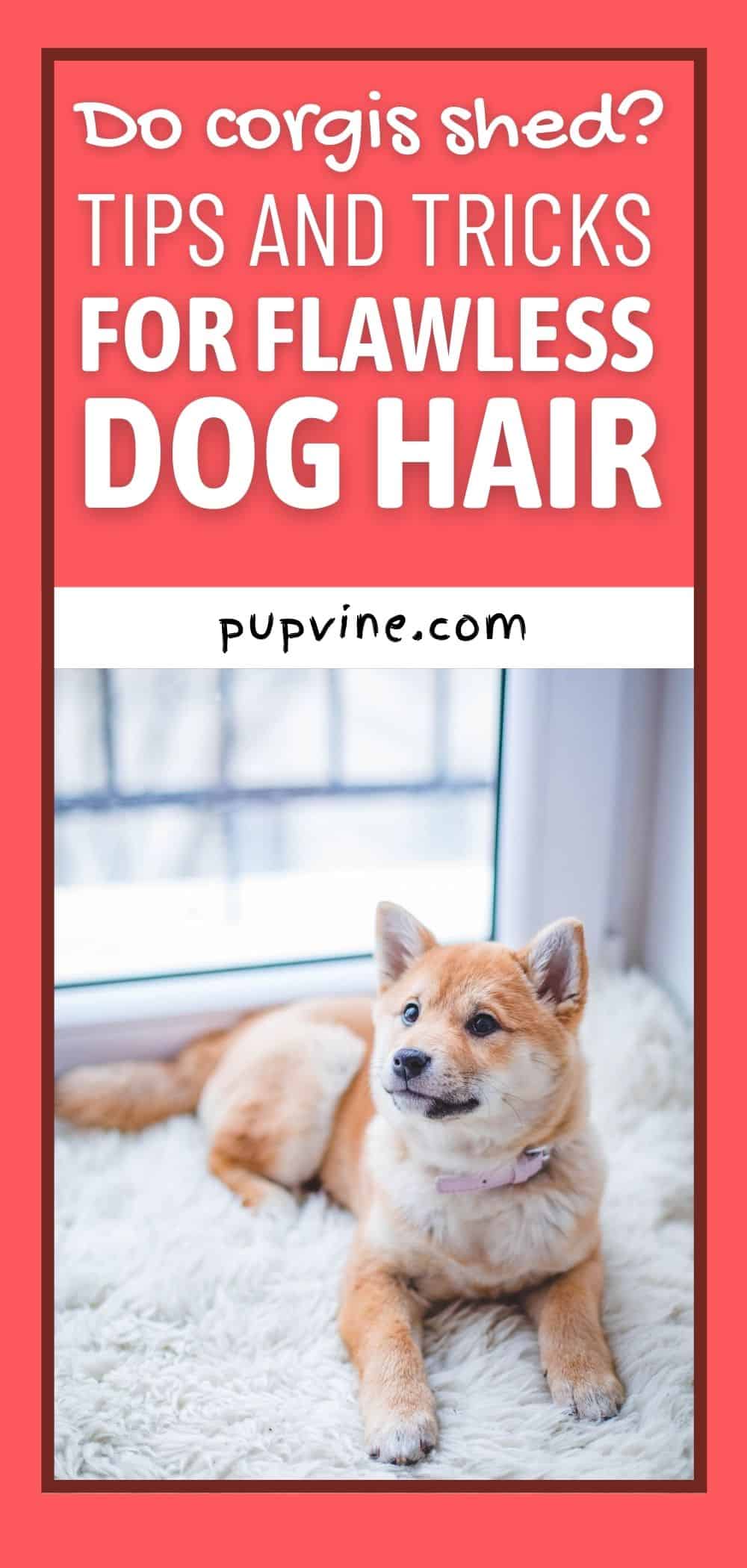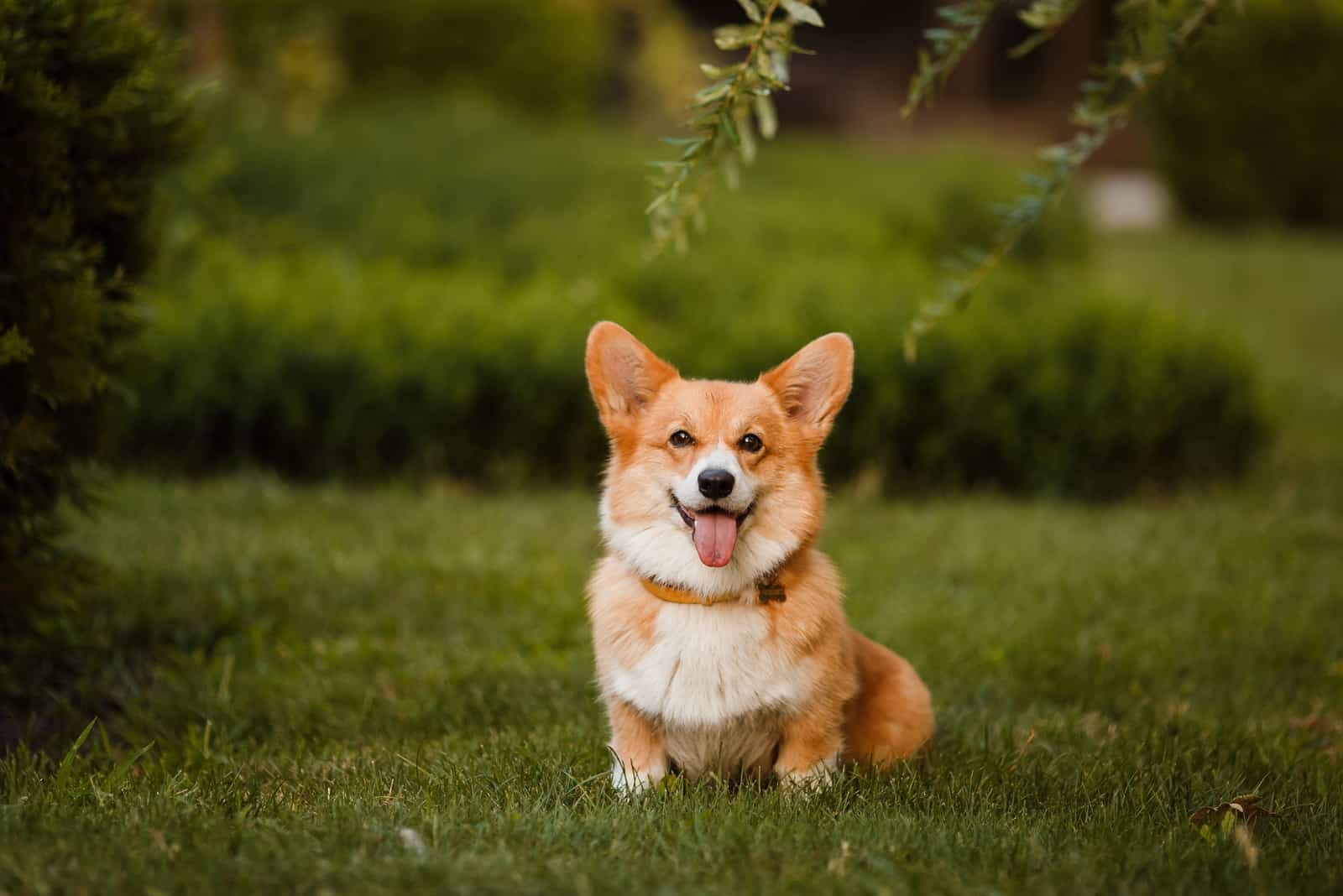Although corgis are special, quirky pups the Queen just adores, they are much like any of the other dog breeds. They all have similar issues, shedding in particular.
So, keeping in mind the issue at hand, have you ever wondered, “do corgis shed?” The answer to this knotty question is simple: YES!
Back in the day, when they were used as herding dogs, corgis found their double coat to be of the finest use. There was no winter for these pups! Their thick, waterproof, soft, and fluffy undercoat kept them protected against the cold.
The summer days were a bit easier since the thick coat got replaced with a lighter version.
Come rain or shine, this dog breed knew exactly how to adapt its outer looks to different situations. And now, you, as a future corgi owner, will know, too!
The Corgi’s Coat: All You Need To Know About A Corgi’s Coat
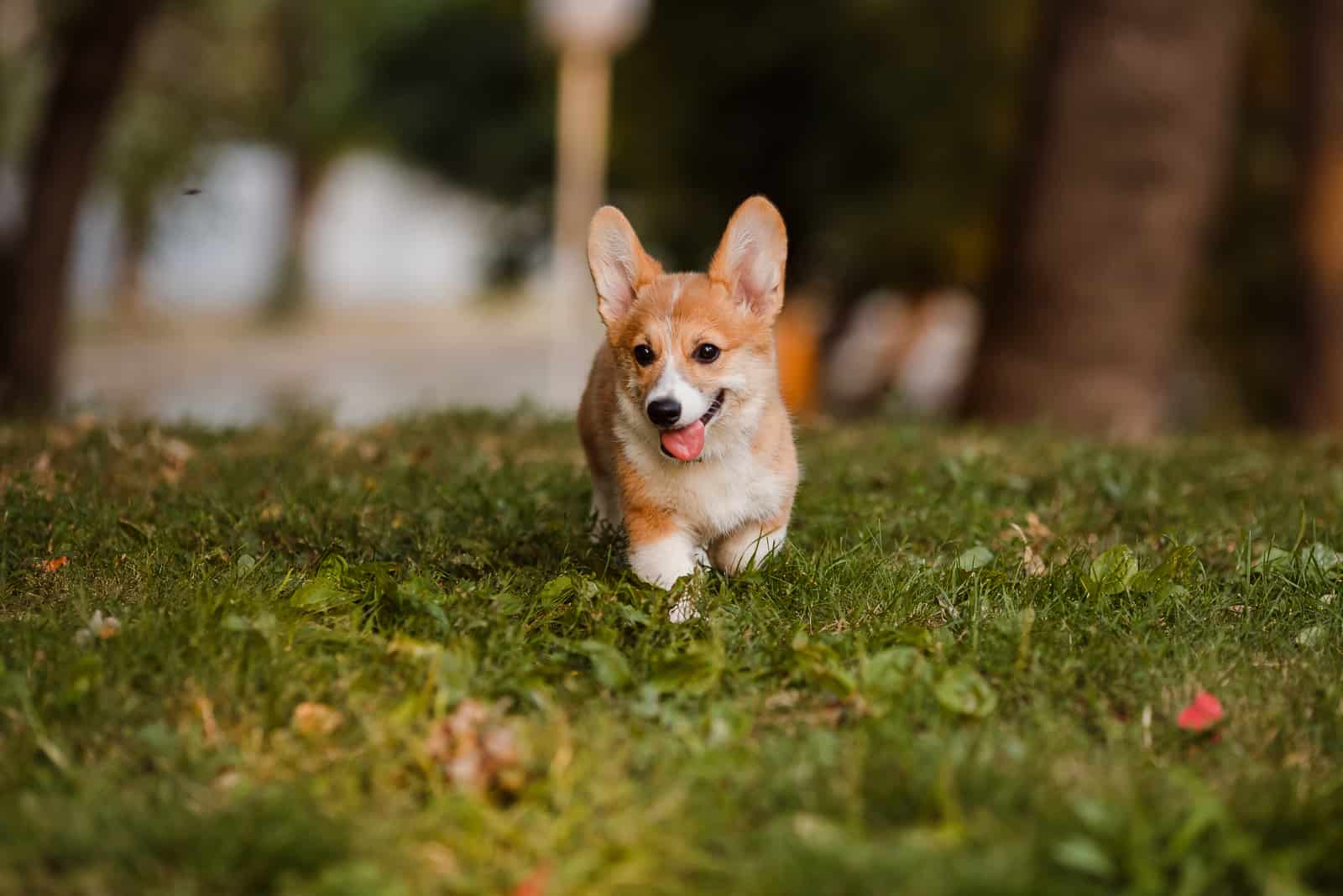
Although there are two types of Welsh corgis, we’re sad there aren’t even more! The Pembroke and Cardigan corgi share some similar traits, but they’re also very different from each other.
What makes these two look so alike are the general coat characteristics.
The Pembroke Welsh corgi can be found in four different colors:
• red
• red-headed tri-color
• black-headed tri-color
• sable
Each one of these colors has a hint of white mixed into the coat.
The Pembroke red corgi covers a variety of red shades: from intense red to pale red (fawn).
Sometimes, red puppies are born with sable markings. Whether they’ll stay sable or fade into red depends on time.
The Pembroke red-headed tri-color corgi resembles a raccoon with black on top of his head, around the eyes, and across the ears.
The undercoat of this type might be tan, but the outer coat is black, with some tan points.
The Pembroke sable corgi is a mixture of red, black, and brown colors. This has to be the most unique coloring of all the corgi coats. There’s black over the shoulders, which is also known as a black cast.
Sables have a thing called “widow’s peak.” It’s a black marking that arches over the eyes and down the muzzle.
The Cardigan Welsh corgi is a dog breed that comes in five different colors:
• black
• blue merle
• brindle
• red
• sable
A black cardigan is mostly black, with white marks across the body. Sometimes these corgies have tan points splattered on their legs or face.
A Cardigan blue merle is a unique-looking dog. The blue merle looks marbled with grey and black or grey with piebald pattern black patches. This dog usually has blue eyes and a butterfly nose with pink patches.
A Cardigan brindle corgi has a brown coat base covered in dark brown or black stripes. They’re the tigers among the corgis!
A Cardigan red is just like his first cousin, the Pembroke red – all red and white!
A Cardigan sable looks like the Pembroke sable. It even has the same “widow’s peak”!

Photo from:@maplestorycorgi
Just like the Pembroke, the Cardie has white mixed into the coat, but it doesn’t surround his eyes, nor does it cover more than 50% of its body.
Both the Pembroke Welsh Corgi and his brother, the Cardigan Welsh Corgi, have medium-length coats. The coat length might vary, depending on the genetics.
The Cardigan Welsh Corgi is more likely to have a longer coat.
These dogs have double coats, meaning there’s a thicker and coarse layer of fur, with a second soft and dense layer underneath.
Does so much coat mean they shed more than other dogs? Yes, it’s a general rule that dogs who have double coats always shed more.
A corgi’s shedding might be less troublesome if you match their coat color with the color of your flooring. Sounds silly, but it might do the trick and save you from all that cleaning. Nobody loves THAT much dog hair.
Does A Pembroke Welsh Corgi Shed More Than A Cardigan Corgi?
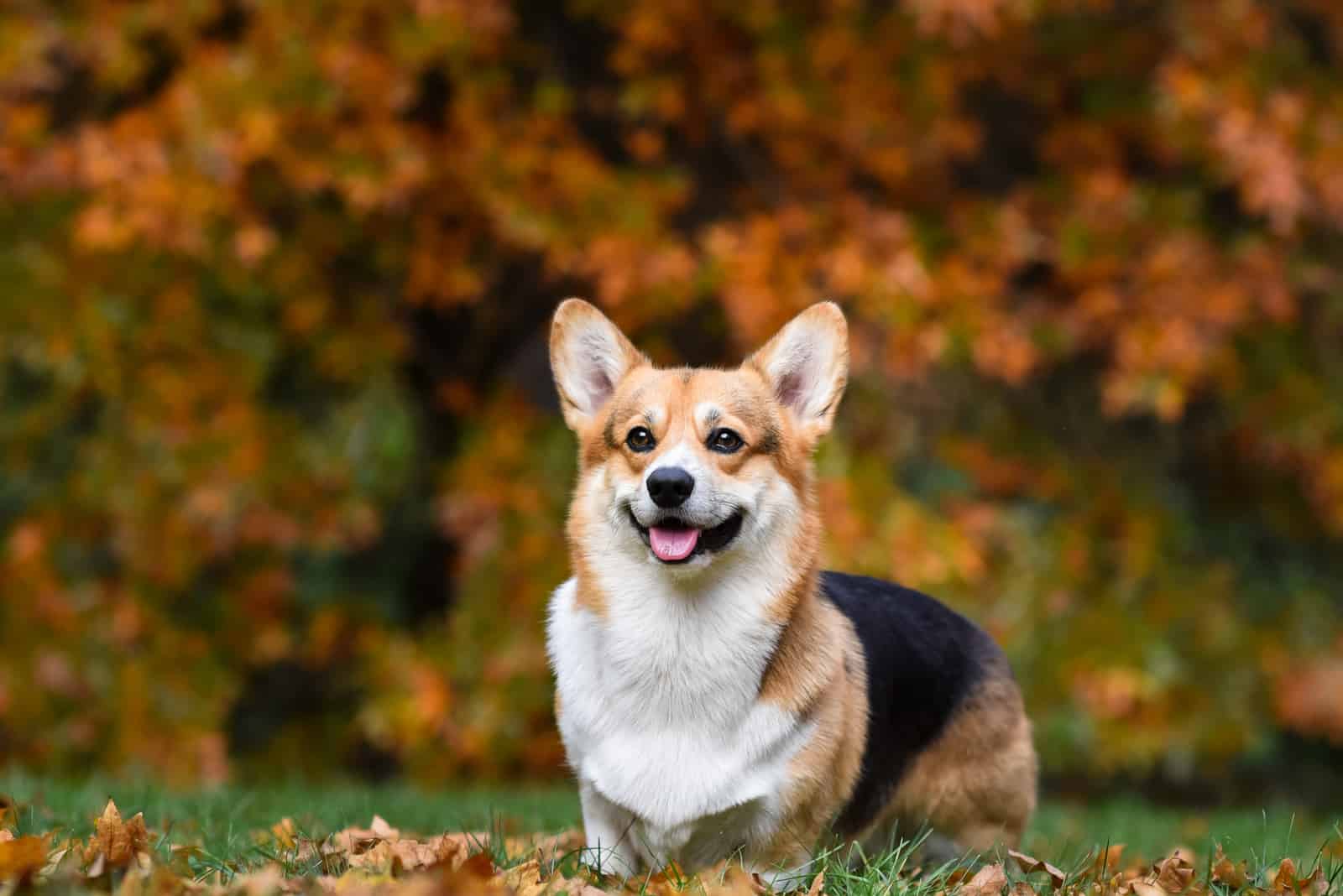
Shedding is a natural process all dogs go through to get the new hair to keep on growing. This isn’t something you should worry about.
Both Cardis and Pembrokes shed all year long, with peak seasons in summer and winter.
Seasonal shedding means nothing else than simply more loose hair around the place at certain times of the year.
These two corgi types aren’t as different as you might think. Cardis might be more prone to extensive shedding, but that’s only because of the middle-length coat. Still, this depends from dog to dog.
The First Year With A Corgi: How Often Does The Shedding Season Hit?
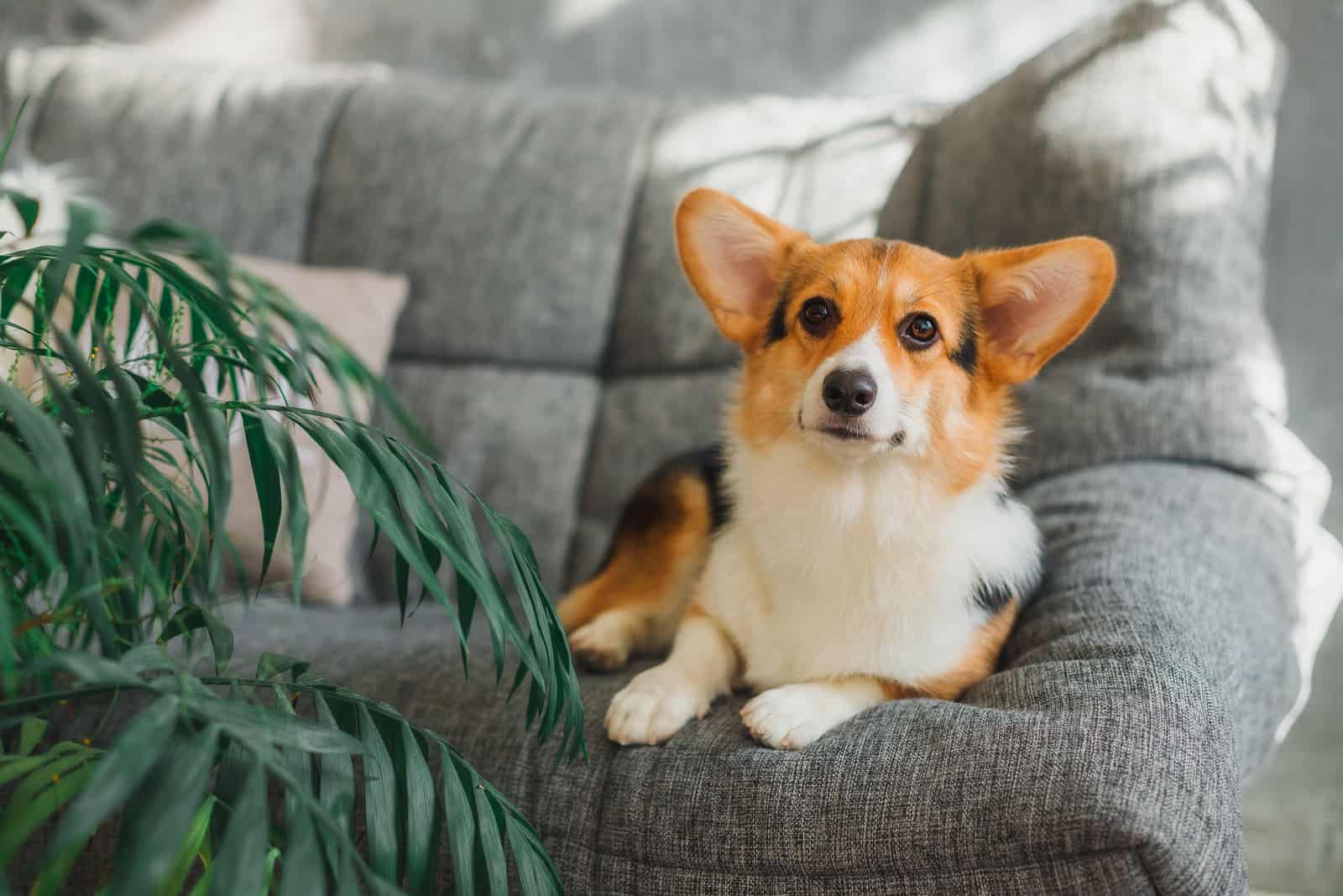
The shedding season will hit you quite often. The first year with your new Corgi might be difficult to adapt to, but it gets easier with time, especially if you learn a few grooming tricks!
Corgis shed all year round, with the peak season during summer and winter. They also shed a bit every day. Every dog with a double coat goes through this cycle.
The shedding season during the summer and the winter is also known as “blowing their coat.” In the winter, corgis grow a thicker coat because of the cold.
Their winter coat disappears, and the opposite happens in summer, to keep the dogs cool.
Luckily, most corgis have a medium-length coat, so their hairs won’t be so visible. Those of you who own long-coat corgis might not be so lucky since their hair requires much more grooming.
The breed that sheds often isn’t the right choice for people who are out of the house a lot. Loose hair will be all over the place if you don’t devote yourself to grooming at least three times a week.
Only then will you ensure there is no unwanted hair on your furniture.
However, if you think your dog’s hair is becoming too difficult to manage and you notice some tangles, consider investing in anti-shedding dog shampoo and a high-quality deshedder.
The Six Triggers That Could Cause Shedding
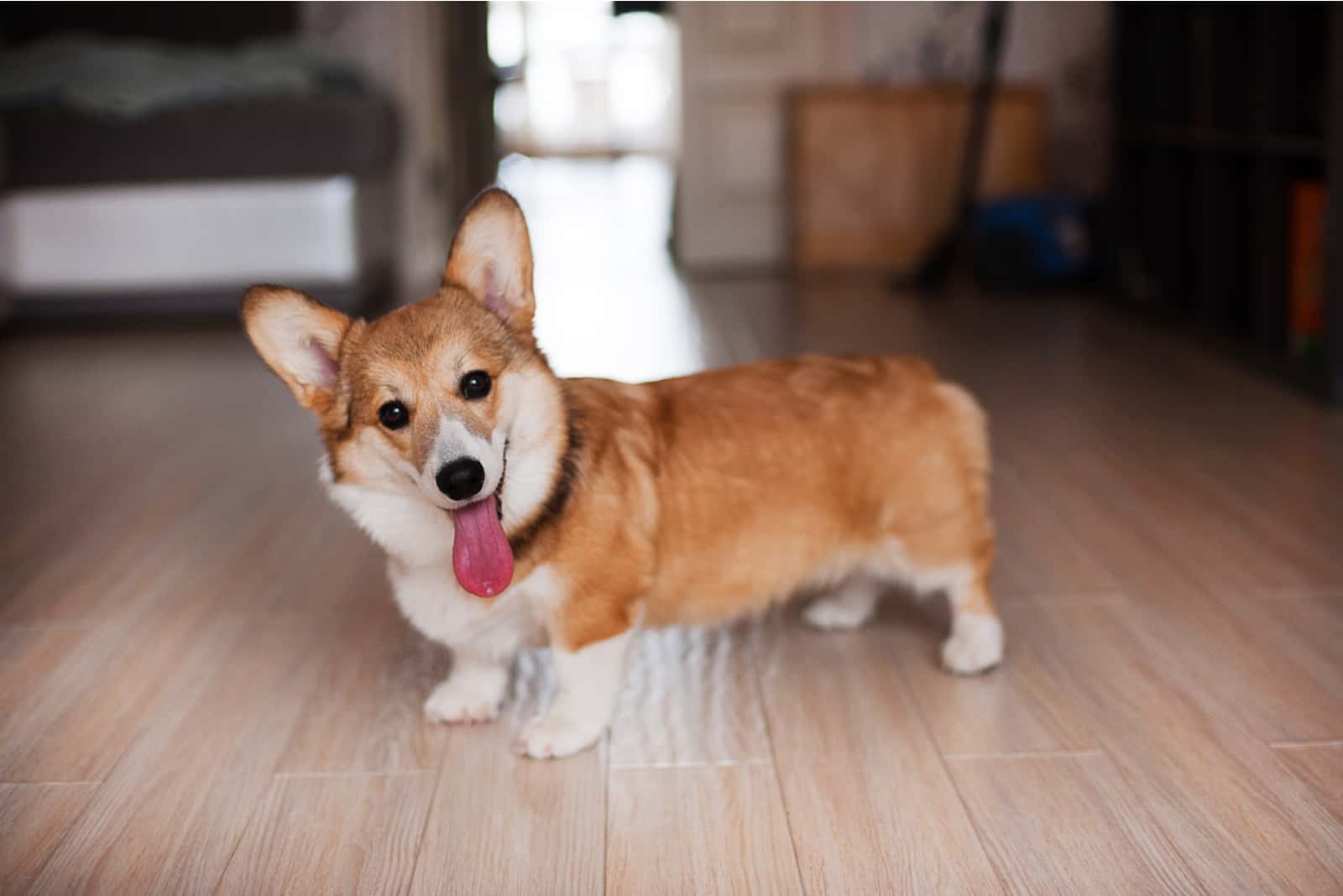
If you thought you’d be done with the vacuuming after the summer and winter shedding season, you’re wrong. Do corgis shed excessively outside the season?
Of course, they do, but the amount of loose hair depends solely on different factors.
Like many others, this dog breed can be affected by many triggers that cause excessive shedding.
Some of them are quite easy to manage, but some are not to be fooled with. Always check with your vet! Tell them what you’re suspecting, and look out for the root problem.
Excessive shedding can be caused by:
• allergies
• nutrition
• stress
• health
• bathing
• shampoo
• hormonal changes
• ticks, fleas, parasites
Allergies
Much like humans, dogs can suffer from allergies. The allergens could be grass, pollen, air, dust, etc. All of them could cause heavy shedding.
Skin allergies may cause the dog’s skin to get dry, flaky, and itchy.
If you suspect your dog might suffer from allergies, be on the lookout for these symptoms:
• sneezing
• scratching
• red and itchy skin
• red and watery eyes
• red, inflamed, or infected ears
• red and inflamed skin between the legs and toes
• fur missing in patches, scabs from scratching
Food
Dogs aren’t supposed to eat human food. It’s of the utmost importance to find the right high-quality dog food for your corgi puppy. Otherwise, your home will be covered in a serious amount of fur.
Check our Corgi feeding chart for more information on this dog’s nutritional needs.
Stress
A lot of events could trigger stress, which can lead to excessive shedding. So, if you’re moving homes or bringing an addition to your family, keep an eye on your corgi; the place might be covered in dead hair soon.
Keep in mind that stress can be hard to detect, especially when it comes to dogs because they are very good at hiding pain.
So, here’s what you need to pay attention to if you suspect your corgi is under stress:
• aggression
• avoidance
• lethargy
• pacing
• drooling
• panting
• tail tucked in between legs
• destructive behavior
• ears pinned back.
Health
Of course, some of the triggers could be much more dangerous. Some are even connected to certain skin diseases and conditions.
Pay attention to any changes in your corgi’s coat. Even the slightest variation could cause more significant troubles.
Bathing
Did you know that too much bathing isn’t good for your dog’s skin? We’re not saying you should keep your dog dirty, but you have to keep it on a somewhat normal level. Or, keep on bathing, but remember: the lint roller will become your BFF.
Bathing is required once a week for the first four weeks. After that, the bathing frequency should move to once a month until they reach the 6-month milestone.
Of course, occasional bathing is absolutely okay if the dog gets dirty or muddy. Otherwise, stick with the three-month schedule.
Shampoo
You can’t grab what’s left of your shampoo and wash your dog. That’s wrong on so many levels! Dogs require special shampoos and conditioners to keep their natural oils intact and their topcoat and undercoat in perfect condition.
Hormonal changes
Just like in many other cases, hormonal changes can affect the loss of dog hair. Hormonal or testosterone swings can make the dog go from fluffy to scruffy in no time!
Things that might cause hormonal troubles and, therefore, the loss of hair are:
• pregnancy
• neutering or spaying
• going into heat
Ticks, fleas, and parasites
Parasites cause the dog to feel itchy and uncomfortable, which leads to more scratching and hair loss.
Luckily, there are ways to fight these little monsters. Talk to your vet and ask him about preventative methods against the pests.
Not a single one of these triggers should be disregarded. We all hope they can be avoided. The sad truth is: they can’t.
Sometimes stressful situations can’t be dodged. We can’t choose whether a tick latches onto our dog or not. But what we can do is try our best to prevent most of these situations.
Still, regular grooming could be the key to move from the club of heavy shedders to that of normal shedders.
The Groomer’s Choice: A Guide On Grooming For Fresh Corgi Owners
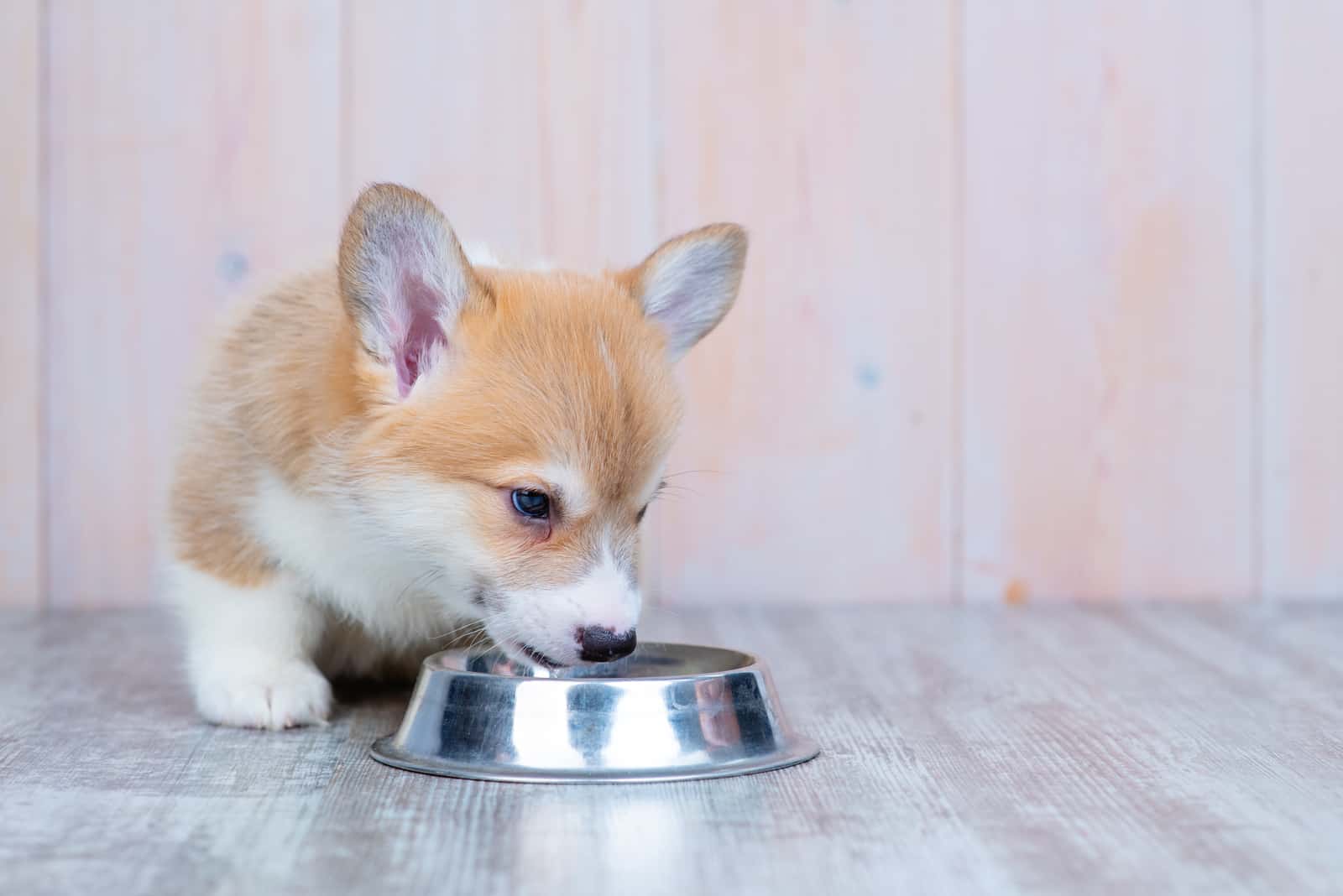
It’s impossible to eliminate the fact your corgi dog sheds. However, you can still manage it and be in charge of your dog’s coat. A balanced diet and a regular brushing routine are the first two steps to healthy corgi fur.
To have a well-groomed corgi, here’s what you have to pay attention to:
• brushing
• shampoos
• food
• supplements
• deshedding products
Brushing
The only way you can cut down the amount of dead hair in half is to brush your corgi every day. You wouldn’t believe the difference it makes! Daily brushing is especially recommended during the shedding season.
If you can’t commit to daily brushing, try to keep the routine for at least three days a week. Anything less than that will result in loose dog hair everywhere.
A pin-style brush or a slicker and a bristle brush will be your friends, so choose them wisely. A good brush gets half of the work done.
Shampoos
Luckily, most corgis don’t have problems with sensitive skin. Still, it wouldn’t hurt to buy natural dog shampoo. There is less chance of the dogs getting a chemical burn if you use natural ingredients.
In case you didn’t know, there are also anti-shed shampoos on the market that might be useful for heavy shedders.
No matter which shampoo you end up buying, it’s important not to over bathe your corgi. Always remember to read the instructions on the back of the label.
So, how often should you wash your corgi? Once a month would be just fine.
Food
Every corgi owner must never forget to include nutrient-dense food in their dog’s diet. Corgis need their daily dose of omega 3 fatty acids. If you’re not aware of the many benefits fish oil has, especially for dog hair, google it. You’ll be astonished!
You should never save money on food. Not for you, and not for your dog either. Your corgi needs food rich in vitamins and nutrients.
Such a diet will guarantee a healthy dog and, also, affect positively on its hair growth.
You want your pup to be the star of every doggy park, don’t you?
Supplements
Food isn’t the only thing a corgi owner should invest in. Supplements play a big role in a dog’s health.
There are many miracle-working supplements on the market, but sometimes it’s hard to get the pup to eat them. Surprise, surprise: we now have chewable supplements!
The dogs love them, and if they knew how much they benefit their skin and coat health, they’d love them even more!
Nonetheless, giving your dog only high-quality supplements won’t have good results if the kibble is second grade. Although supplements are healthy, the food comes first.
Deshedding products
We wouldn’t advise owning a corgi before buying a deshedder. This is a tool you will absolutely LOVE! Why? Because it gets rid of the terrible tangles!
Dogs with an outer coat and undercoat simply must have this tool!
If you can get your paws on the Furminator, you’re one lucky corgi owner!
When using a deshedder, remember not to use it on its own. This product must be used along with a brush.
What’s In Style: Corgi Haircuts
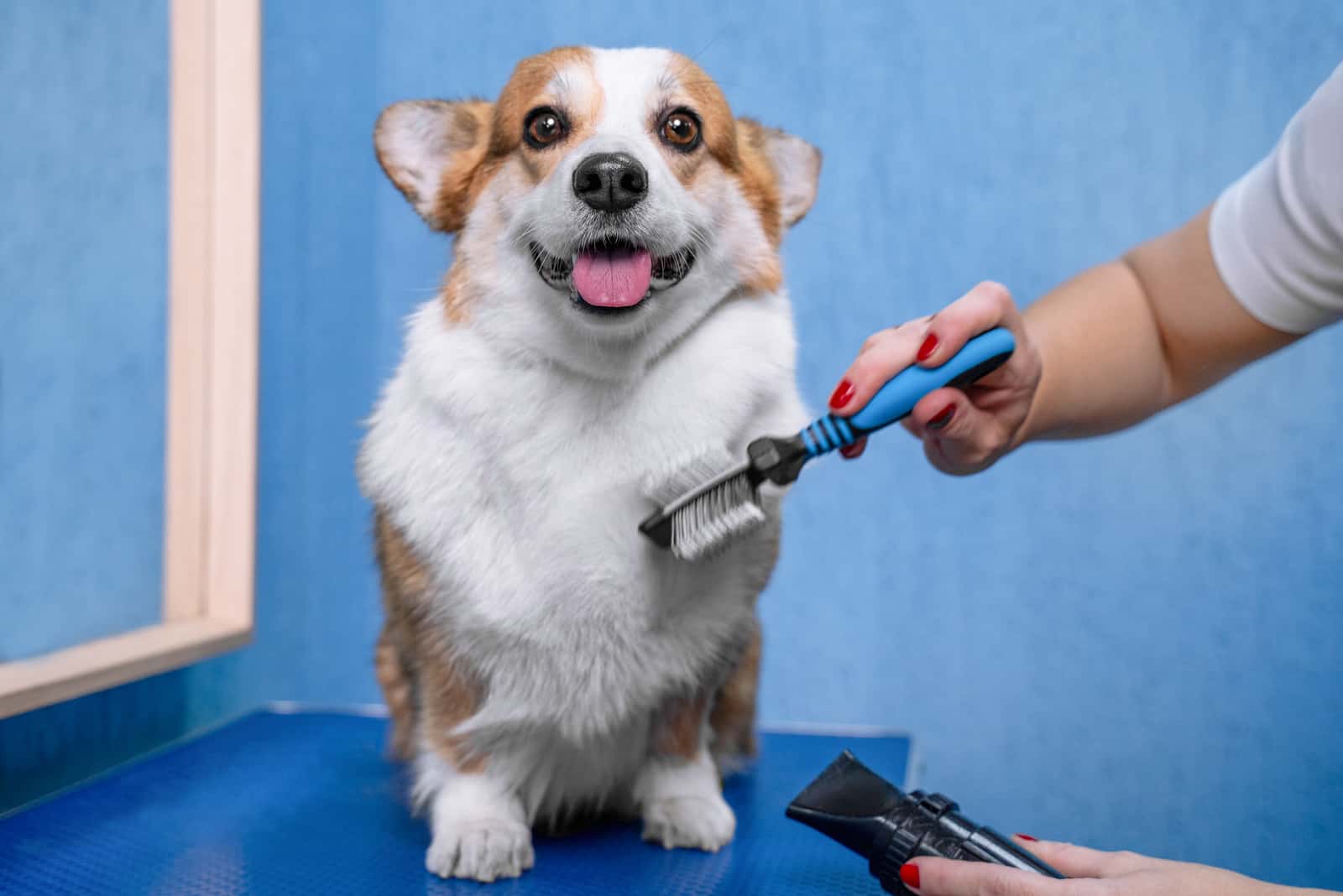
Here’s where fashion proves itself useful! Corgi haircuts are not only cute but also safe and help to manage their coat and health.
It’s ironic, really, because corgis are one of those breeds with a good hair day, every day! Just wash, dry, and they’re ready to go.
The vast majority of dog groomers recommend only brushing and not cutting hair.
But, core owners around the globe would disagree with them. Fun and adorable corgi hairstyles are all over the place.
Are there any hairstyles you should avoid? Absolutely! One must never shave down a corgi!
Irreversible damage to the coat could happen, and it might not even grow back at all. Also, a shaved down corgi is more likely to suffer from sunburn in the summer or hypothermia in the winter.
Trimming down with scissors will do the trick.
Are Corgis Hypoallergenic?
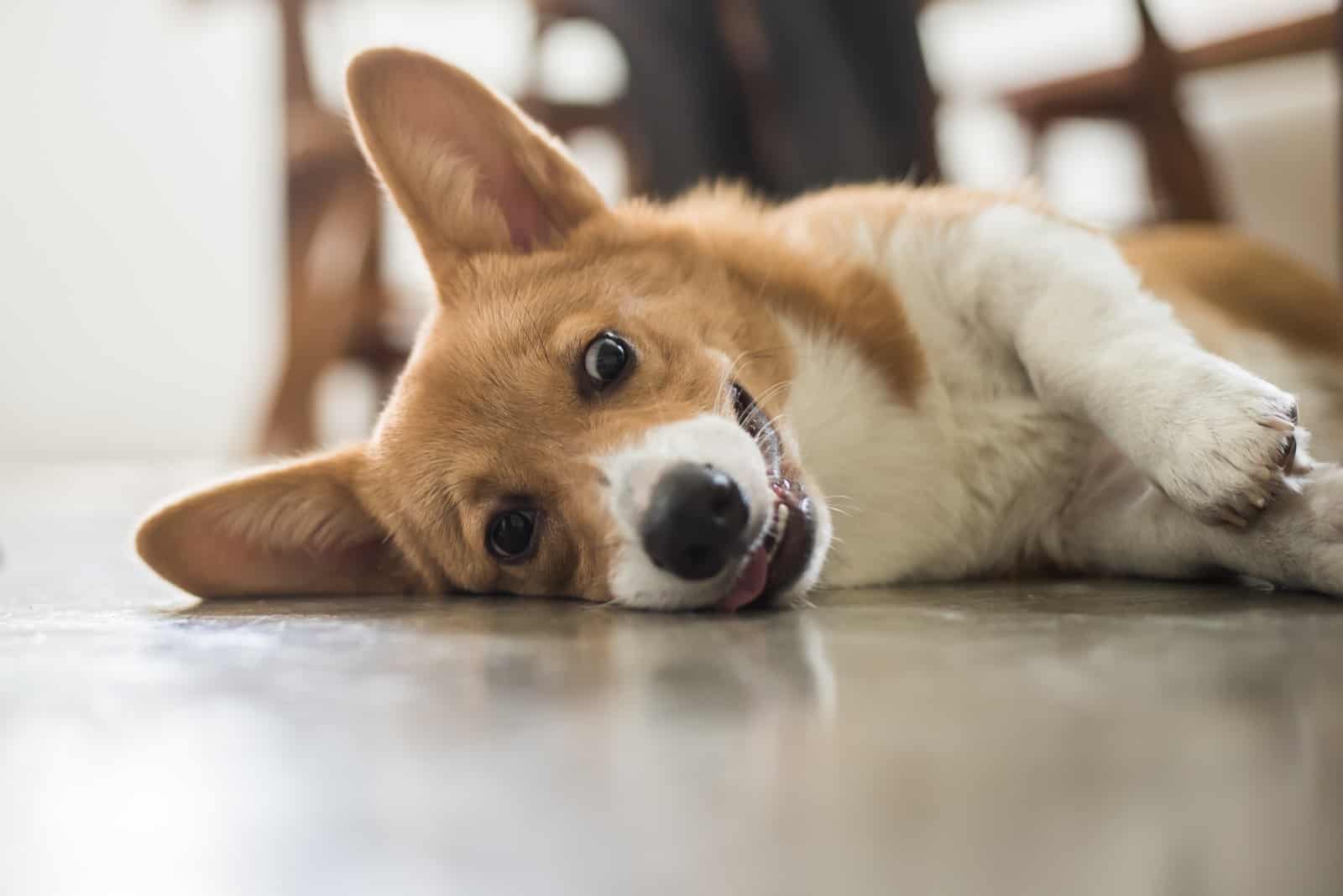
Sadly, corgis are not a hypoallergenic breed.
It’s the dander, the dead skin, that people are allergic to. Yes, that’s similar to our dandruff.
Dog dander gets released every time a dog sheds; therefore, during the shedding season, there will be dander and hair everywhere.
If you’re prone to allergies, you might want to pick another dog breed to be your companion. However, if you simply must have a corgi, why don’t you consider getting a corgi mix breed?
A corgipoo could be your perfect pet: it inherits the hypoallergenic trait from one of the parents, the poodle.
But still, if you don’t suffer from allergies, corgis make wonderful pets! They’re loving and affectionate at all times. It’s really no wonder why the Queen of England has so many of them – thirty, at least!
The Bottom Line Is…
Corgis do shed, but that’s nothing you can’t handle. Arm yourself with patience, time, and good grooming tools.
If you’re still wondering, “Do corgis shed like crazy?”, here’s your answer: You can make a new corgi out of your real dog’s hair after seasonal shedding. But that just makes the whole process fun, doesn’t it?
Just because a corgi sheds doesn’t mean this dog breed isn’t PAW-fect for you!
Read Next: The 3 Most Reputable Corgi Breeders In Ontario For 2022
